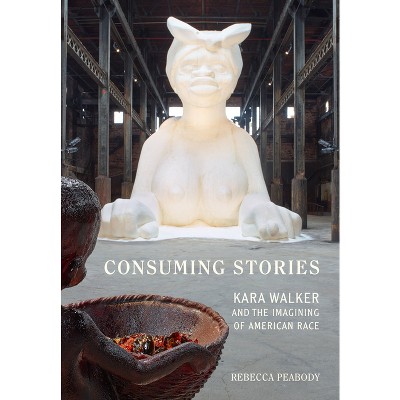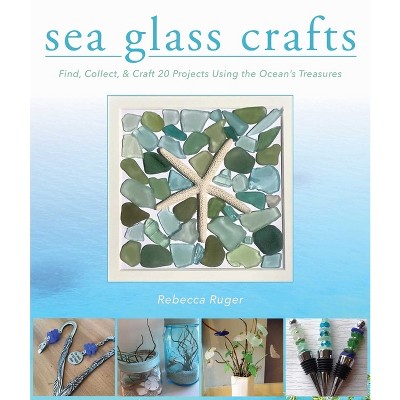Sponsored

Moved to Tears - by Rebecca Bedell (Hardcover)
$55.00
In Stock
Eligible for registries and wish lists
Sponsored
About this item
Highlights
- A bold new view of sentimental art's significance in American visual culture from the eighteenth to the twentieth century In Moved to Tears, Rebecca Bedell overturns received ideas about sentimental art.
- About the Author: Rebecca Bedell is associate professor of art and chair of the Art Department at Wellesley College.
- 232 Pages
- Art, History
Description
About the Book
In this volume, Bedell examines received ideas about sentimental art. Countering its association with trite and saccharine Victorian kitsch, she argues that major American artists--from John Trumbull and Charles Willson Peale in the eighteenth century and Asher Durand and Winslow Homer in the nineteenth to Henry Ossawa Tanner and Frank Lloyd Wright in the early twentieth--produced what was understood in their time as sentimental art: art intended to develop empathetic bonds and to express or elicit social affections, including sympathy, compassion, nostalgia, and patriotism.Book Synopsis
A bold new view of sentimental art's significance in American visual culture from the eighteenth to the twentieth century
In Moved to Tears, Rebecca Bedell overturns received ideas about sentimental art. Countering its association with trite and saccharine Victorian kitsch, Bedell argues that major American artists--from John Trumbull and Charles Willson Peale in the eighteenth century and Asher Durand and Winslow Homer in the nineteenth to Henry Ossawa Tanner and Frank Lloyd Wright in the early twentieth--produced what was understood in their time as sentimental art. This was art intended to develop empathetic bonds and to express or elicit social affections, including sympathy, compassion, nostalgia, and patriotism. Much sentimental art of this era was animated by and invested with socially transformative ambitions. Trumbull and Peale deployed their sentimental creations in the urgent effort to stabilize the new nation in the wake of the Revolutionary War. Through his work, Tanner opposed the virulent anti-Semitism of fin-de-siècle France. Even artists such as John Singer Sargent and Mary Cassatt, who had absorbed something of modernist disdain for sentimentalism, were aware of its commercial potential and popular appeal and negotiated complex relations with it. Beautifully illustrated, Moved to Tears transforms our understanding of the nature and influence of sentimental art.Review Quotes
"
Bedell shows how subtly and certainly sentimentalism pervades the work of nineteenth-century American artists. She shows that sentimentalism, by pulling on heartstrings, by creating sympathetic ties, was a force that artists used to their own ends as they went about their work of making appealing art.
"---Karen Zukowski, Nineteenth Century"A Choice Outstanding Academic Title of the Year"
"This is a must-read for art historians, museum curators and those who are studying to enter these fields, as a buyer or a viewer might ask about it after this read (because the subject is particularly communicative)."-- "Pennsylvania Literary Journal"
About the Author
Rebecca Bedell is associate professor of art and chair of the Art Department at Wellesley College. She is the author of The Anatomy of Nature: Geology and American Landscape Painting, 1825-1875 (Princeton). She lives in Cambridge, Massachusetts.Dimensions (Overall): 9.7 Inches (H) x 8.8 Inches (W) x .9 Inches (D)
Weight: 2.3 Pounds
Suggested Age: 22 Years and Up
Number of Pages: 232
Genre: Art
Sub-Genre: History
Publisher: Princeton University Press
Theme: Modern (late 19th Century to 1945)
Format: Hardcover
Author: Rebecca Bedell
Language: English
Street Date: November 13, 2018
TCIN: 1005996570
UPC: 9780691153209
Item Number (DPCI): 247-10-8300
Origin: Made in the USA or Imported
If the item details aren’t accurate or complete, we want to know about it.
Shipping details
Estimated ship dimensions: 0.9 inches length x 8.8 inches width x 9.7 inches height
Estimated ship weight: 2.3 pounds
We regret that this item cannot be shipped to PO Boxes.
This item cannot be shipped to the following locations: American Samoa (see also separate entry under AS), Guam (see also separate entry under GU), Northern Mariana Islands, Puerto Rico (see also separate entry under PR), United States Minor Outlying Islands, Virgin Islands, U.S., APO/FPO
Return details
This item can be returned to any Target store or Target.com.
This item must be returned within 90 days of the date it was purchased in store, shipped, delivered by a Shipt shopper, or made ready for pickup.
See the return policy for complete information.











